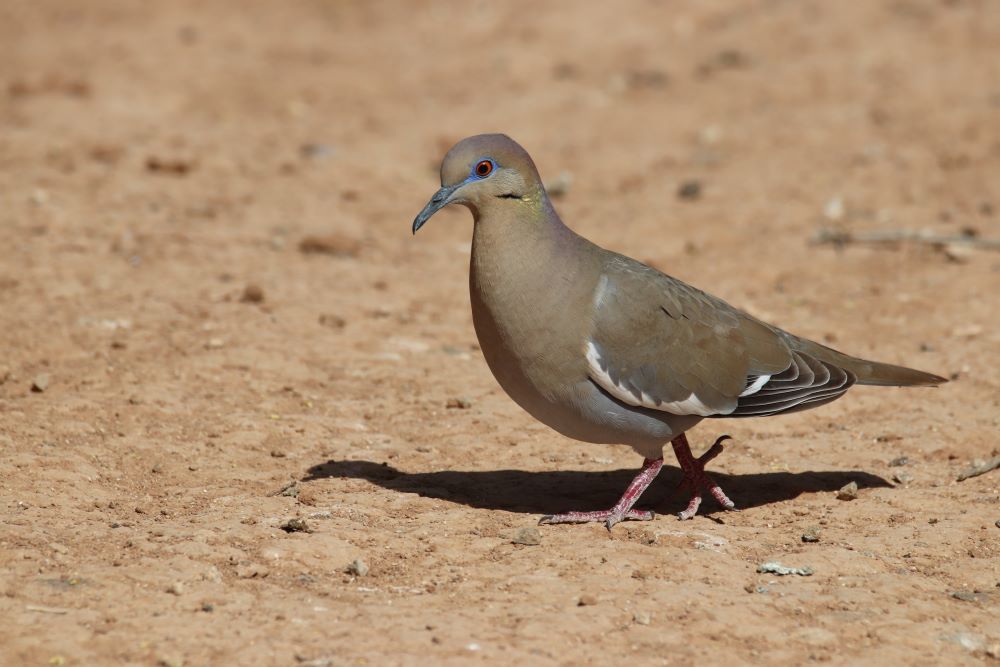
In this avian removal article, you’ll discover the types of pigeons that call Arizona their home, understand their habitats and behaviors, and learn how to manage unexpected interactions with them.
If you’re dealing with pigeons infesting your home or business in Maricopa county, Green Magic Pest Control is here to help. Contact us today for a free quote, and get those birds out of your attic!
Types of Pigeons Found in Arizona
Arizona serves as a habitat to various pigeon species, each with its distinct features and preferences. Among these, the Rock Pigeon is perhaps the most recognizable, with its grey body, iridescent neck, and distinct cooing sound. Originally native to Eurasia and parts of Africa, they’ve managed to break their way into urban areas around the whole world through hitching a ride on global shipping networks. You’ve heard them called rats with wings, but pigeons have spread across the globe in a similar way!
Another species to grace the Arizona skies is the Band-tailed Pigeon. Larger than its rock-dwelling cousin, this bird boasts a sleek, grey body and a namesake band on its tail. Preferring the wooded areas over urban environments, they add a wild charm to the state’s natural landscapes.
The Eurasian Collared-Dove, a relative newcomer to Arizona, has quickly made itself at home. With its light grey plumage and distinct black neck collar, it’s becoming a common sight in both urban and rural areas.
These species, among others, enrich the avian diversity of Arizona, each contributing in its way to the ecological balance of the region. Observing their behaviors and interactions provides a window into the complexity of nature’s web.
Habitat and Behavior of Pigeons in Arizona
Pigeons in Arizona inhabit a variety of environments, from the bustling cityscapes to serene natural settings. The Rock Pigeon, with its preference for ledges, bridges, and buildings, finds ample nesting spots in urban areas. Here, they’ve adapted to the presence of humans, often relying on food scraps for sustenance.
In contrast, the Band-tailed Pigeon seeks the solitude of dense forests and mountainous areas. These birds are more reclusive, living in flocks and feeding on seeds, fruits, and plants. Their behavior reflects their need for natural habitats, untouched by urban development.
The Eurasian Collared-Dove, versatile in its habitat preference, thrives in both urban and rural settings. Its adaptability is evident in its diet, which includes a variety of grains, seeds, and occasionally, insects. This species’ ability to coexist with humans has facilitated its spread across the state, showcasing the diverse habitats Arizona offers to pigeons.
Understanding these behaviors and habitat preferences is crucial for appreciating the role pigeons play in Arizona’s ecosystems. They are not merely birds of the city but are integral components of the state’s biodiversity, each species contributing to the ecological balance in its unique way.
What to Do if a Pigeon Gets in Your House
Encountering a pigeon inside your house can be an unexpected surprise. While your first instinct might be panic, it’s important to remain calm and approach the situation thoughtfully. The bird is likely more scared of you than you are of it, and your goal should be to safely guide it back outdoors.
First, try to confine the pigeon to one room by closing doors or using barriers. This minimizes the area you need to manage and reduces stress for both you and the bird. Ensure that windows are open wide and that screens are removed, providing a clear exit route for the pigeon.
Next, gently encourage the pigeon towards the exit. Avoid sudden movements or loud noises, as these can startle the bird, making the task more challenging. Using a soft cloth or towel, you can gently guide the pigeon without direct contact, ensuring a safe and stress-free resolution for both parties.
Pigeon Control Methods
While pigeons can be fascinating creatures, their presence in large numbers can pose challenges. Effective pigeon control methods are essential for maintaining a balance, ensuring that pigeons do not become a nuisance in urban or residential areas.
Physical deterrents, such as bird spikes or netting, can discourage pigeons from nesting on ledges, roofs, or balconies. These methods are humane and do not harm the birds but simply make the area less appealing for roosting or nesting.
Chemical deterrents, though less commonly recommended, can also be used to manage pigeon populations. These should be applied by professionals to ensure the safety of both the birds and humans in the vicinity. Many of these chemical options are illegal for unlicensed civilians to use, as well. If you feel like you need to up the ante in your fight against birds invading your space, it’s probably best for you to call a professional wildlife removal service like Green Magic Pest Control.
Another effective strategy is habitat modification. This involves removing or securing food sources and making nesting sites less accessible, encouraging pigeons to move to more suitable areas.
Conclusion
For those facing challenges with pigeons or other wildlife, remember that professional help is available. Green Magic Pest Control is Maricopa country’s top bird and wildlife removal agency. Contact us today for a free consultation, and let’s get your home or business pigeon-free!

